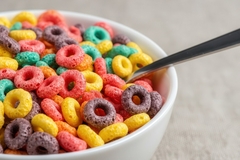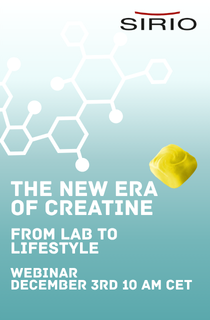US FDA releases new guidance on lead in processed foods to combat childhood exposure
The US Food and Drug Administration (FDA) has issued draft guidance for the baby food industry regarding lead in processed foods intended for infants, babies and children under the age of two. The guidance is meant to decrease dietary exposure to the toxic heavy metal and reduce the potential for negative health effects.
The new guidance is part of the agency’s “Closer to Zero” initiative to reduce exposure to heavy metals and other contaminants during childhood.
Additionally, it sets forth new action levels for the industry. Action levels are a tool the agency uses to show at what level a contaminant can exist in a food product before that product is considered contaminated.

“The proposed action levels announced, along with our continued work with our state and federal partners and with industry and growers to identify mitigation strategies, will result in long-term, meaningful and sustainable reductions in the exposure to this contaminant from foods,” says FDA commissioner, Dr. Robert M. Califf.
However, Dr. Susan Mayne, director of the FDA’s Center for Food Safety and Applied Nutrition, explains that the new guidance is intended for producers and is not meant to instruct consumers on how to make food choices.
“To support child growth and development, we recommend parents and caregivers feed children a varied and nutrient-dense diet across and within the main food groups of vegetables, fruits, grains, dairy and protein foods,” she says.
Protecting the most vulnerable
The move comes almost two years after the introduction of the “Closer to Zero” program and the European Union’s introduction of lead and heavy metal reduction regulations, issued in August of 2021.
Moreover, the new guidance comes on the heels of comments issued to the FDA regarding the efficacy of the “Closer to Zero” action plan by attorney Pedram Esfandiary of Baum Hedlund Aristei & Goldman firm at the beginning of 2022.
At that time, Esfandiary told NutritionInsight, “The FDA has historically taken measures that are fundamentally geared toward protecting the bottom line of the industry as opposed to prioritizing consumer health. For example, the agency is adamant that setting maximum allowable levels of heavy metals in foods should be guided by what industry deems financially viable, not what is most beneficial to protecting public health.”
What’s included
The foods affected by the agency’s 17-page draft guidance, “Action Levels for Lead in Food Intended for Babies and Young Children,” include packaged and processed foods such as those found in jars, tubs, pouches and boxes. The guidance’s new action levels are: The agency says the new action levels are based on consumption and environmental factors and maintains they are completely achievable.
The agency says the new action levels are based on consumption and environmental factors and maintains they are completely achievable.
- 10 parts per billion (ppb) for fruits, vegetables (excluding single-ingredient root vegetables), mixtures (including grain and meat-based mixtures), yogurts, custards/puddings and single-ingredient meats.
- 20 ppb for root vegetables (single ingredient).
- 20 ppb for dry cereals.
“For babies and young children who eat the foods covered in today’s draft guidance, the FDA estimates that these action levels could result in as much as a 24-27% reduction in exposure to lead from these foods,” explains Dr. Califf.
“This approach helps your children get important nutrients and may reduce potential harmful effects from exposure to contaminants from foods that take up contaminants from the environment,” Dr. Mayne highlights.
Long time coming
According to the guidance issued by the FDA, the new action levels are achievable by the industry and affirms that it will strive for continual reduction though it admits that some level of the contaminant may be unavoidable in some foods due to environmental factors.
For this reason, the agency has issued differing action levels for different products based on consumption levels as well as the amount of lead different foods absorb from the environment.
“Just as fruits, vegetables and grain crops readily absorb vital nutrients from the environment, these foods also take up contaminants, like lead, that can be harmful to health,” the agency states.
The FDA also used its Interim Reference Level – a measure of how much lead in certain foods contributes to blood lead levels – to determine acceptable action levels.
Edited by William Bradford Nichols
















